Exploring flavor-infused gems
A background on barrel-aged beer

Aromatic, complex, flavorful - a good barrel-aged beer features all these qualities. This beer style has become a revered choice for beer enthusiasts, representing a fusion of brewing tradition and innovation. But how do we define barrel-aged beer, how did it come about, and what beer glassware will help you to get the most out of it?
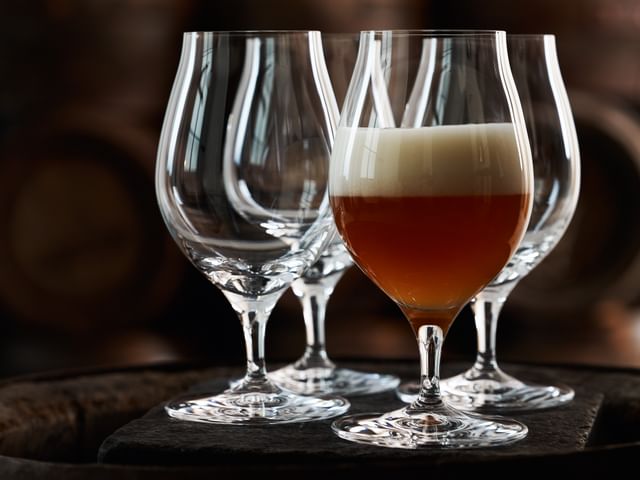
What is barrel-aged beer?
While many beer styles are defined by the ingredients they use or their brewing process, barrel-aged beer is defined by what happens to the beer after it has been brewed. As its name suggests, barrel-aged beer is precisely that—beer that has been aged in wooden barrels. The aging, which can last from a few months to years, allows the beer to take on unique flavors imparted by the wood. This can include qualities from spirits previously aged in the same barrel or smokey notes if the barrel has been previously charred. The addition of these aromas and flavor infusions deeply transform the beer, adding layers of complexity and depth that make barrel-aged beers stand out in the craft beer world.
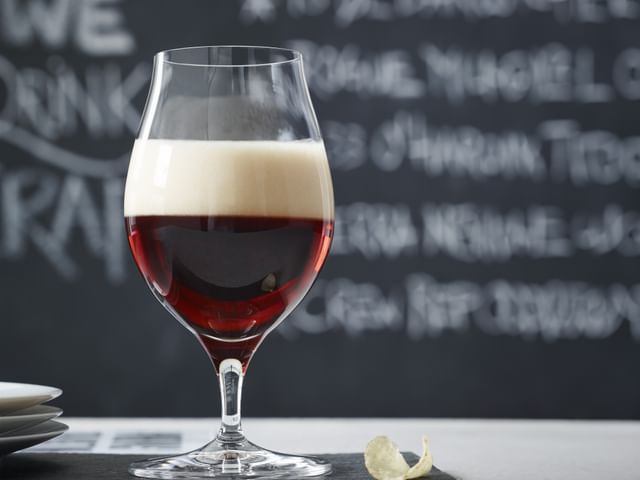
The process of barrel-aging
The process of making barrel-aged beer begins like any other beer, with the brewing and fermentation of a base beer. Once the beer has been brewed and fermented, it is transferred to barrels for aging.
The type of barrel used during the aging plays a significant role in the beer's final flavor profile. Some examples of barrels that can be used for aging beer include:
- Whiskey barrels: A classic - these barrels impart flavors of vanilla, caramel, and oak, along with the residual warmth of whiskey. Bourbon barrels are a particularly popular choice of casks for barrel-aged beer brewers in the US and are ideal for aging porters, stouts, and some stronger ales.
- Wine barrels. These barrels contribute fruitiness, tannins, and acidity to beer. A range of red wines, as well as some white wines like oaked chardonnay, are barrel-aged, so a wine barrel can deliver a spectrum of qualities. Wine barrel-aging is often used for sour beers, which benefit from the fruity notes that the wine barrels add, as well as other more fruit-forward beer styles such as saisons.
- Rum barrels: The natural tropical sweetness, molasses, and spice notes that rum barrels deliver make them a favorite of barrel-aged beer producers. As with whiskey barrels, rum barrels are often used to age stout, porter, and various rums, adding slightly sweeter molasses flavors than their whiskey counterparts.
- Gin barrels: Barrels aren't often used for aging gin, but the ones that are can deliver rich notes of citrus and other fruits to give a fragrant lift to your beer. The subtle botanical flavors brought to the table by gin barrels make them suitable for various pale ales, adding a refreshing twist to the beer's complexion.
In addition to imparting flavors directly from the wood, barrel-aging allows for micro-oxidation, a slow interaction with oxygen that can further develop the beer's complexity, soften harsh edges, and meld the flavors together. After aging, the beer may be blended with other batches or barrels to achieve a balanced flavor profile.
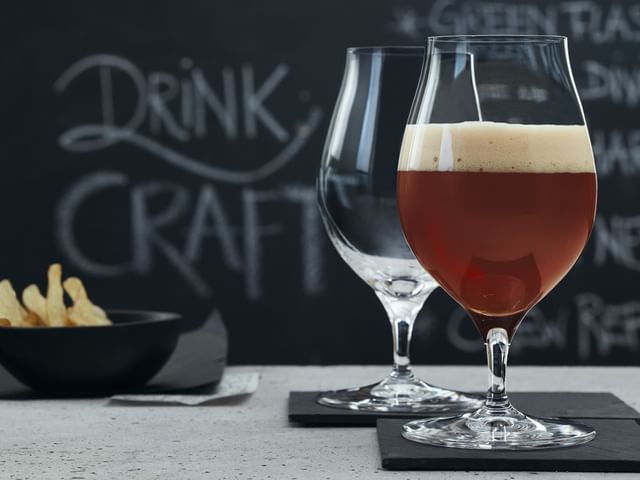
The origins of barrel-aged beer
So, when did the practice of aging beer in barrels begin? Barrel-aged beer has undoubtedly enjoyed a surge in popularity during the craft beer movement of the 21st century, but it is more of a sophisticated and deliberate revival of ancient brewing traditions rather than a new concept.
Before the invention of steel casks and refrigerators, brewers relied on wooden casks, usually made from oak, to ferment, store, and transport beer. Though not the primary intention, brewers were, on occasion, left impressed by the flavors that these barrels often imparted into the beer, particularly when it was shipped over long distances or stored for extended periods. This led some brewers to deliberately aging beer in barrels to enhance flavor.
The art of barrel aging was never wholly lost, but it took a backseat in the 20th century when steel tanks started being used more for beer. Steel tanks became very popular during this time because of their durability, the control they gave over the brewing process, and their reduced risk for contamination. Barrels were no longer needed for what had been their primary purpose, so their popularity diminished.
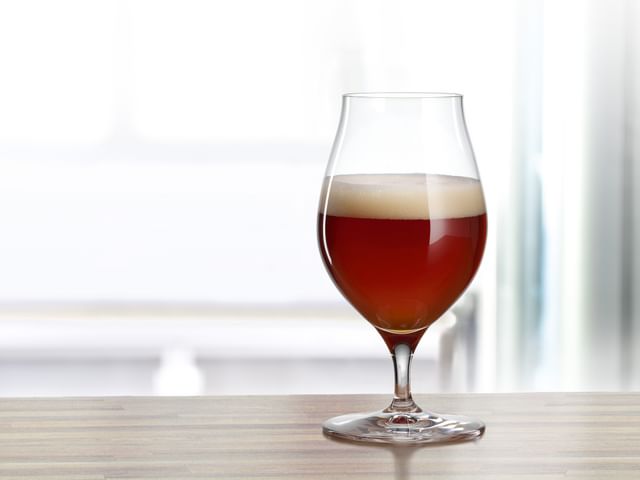
Barrel-aged beer's reemergence
While steel tanks initially may have reduced the popularity of barrel aging, they eventually provided the platform for the refined style of barrel aging that we know and love today. Thanks to the widespread use of steel tanks, it became possible to use barrel aging as a deliberate, artisanal process rather than a necessity. As the craft beer movement began to gain momentum in the late 20th century, small, independent breweries were eager to push the boundaries of traditional brewing, exploring new techniques and ingredients - and the intricacies offered by barrel aging fit the bill perfectly. Brewers began seeking out different types of barrels and experimenting with aging times to create distinct beer experiences, selecting spirit or wine-soaked wood to impart that richness and complexity that we all associate with barrel-aged beers today.
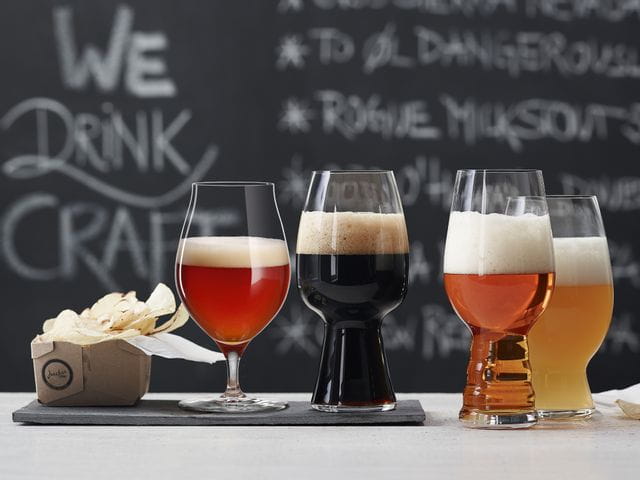
Selecting the right glass for your barrel-aged beer
Since we're so fond of the possibilities that lie with barrel-aged beers, it's only fitting we offer optimal glassware to enjoy them from. To make the most of barrel-aged beer’s complex expression of aroma, taste, mouth feel, and finish, we developed the Spiegelau Barrel Aged Beer Glass in partnership with master craft beer brewers. This tulip-shaped glass allows you to savor the rich aromas of your favorite barrel-aged beer before sipping smoothly, delivering a seamless transition of the beer from the crystal glass to your palate. The glass is also designed to prevent your beer from going flat too quickly with its narrow base, allowing you to fully experience the depth of your barrel-aged beer's qualities.
The Spiegelau Barrel Aged Beer Glass is part of a series of Spiegelau craft beer glasses, all of which have been approved by an expert tasting panel of master brewers and industry professionals. Each glass from this series is specially designed and selected to demonstrate the optimum texture, balance, and flavor intensity for its respective beer, giving you the ultimate beer experience.
From its historical roots in necessity to its modern-day status as a craft beer delicacy, barrel-aged beer is a diverse and intriguing style that offers something for every palate. Whether you're savoring a rich bourbon barrel-aged stout or exploring the tangy complexity of a wine barrel-aged sour, these beers provide a drinking experience that is both timeless and ever-evolving.
Lieux